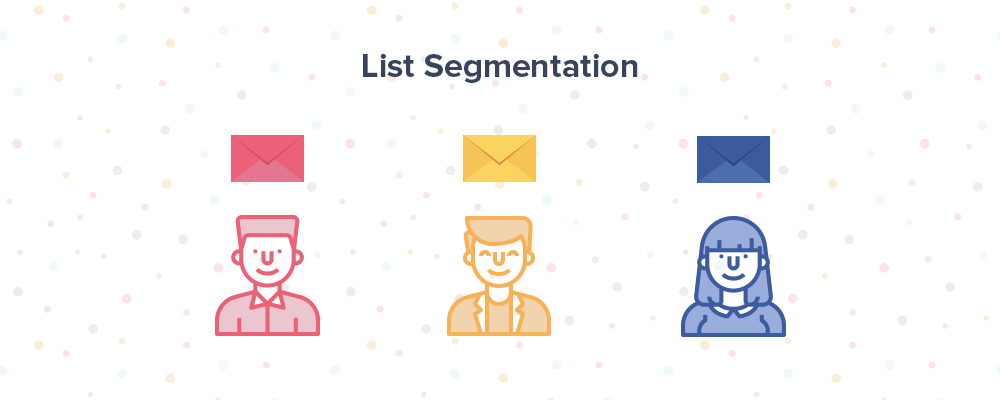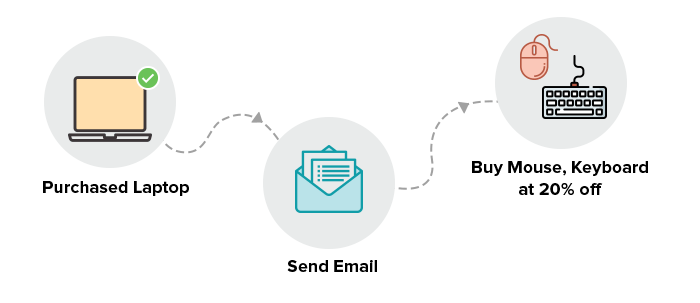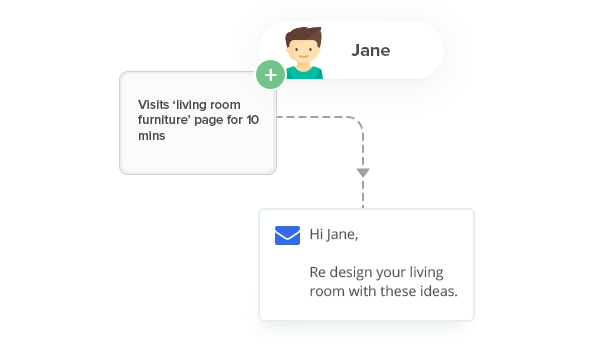Too often, marketers and sales teams focus on building a list of leads and they Stop. Right. There. But taking it a step further by applying lead segmentation rules will help you get more value out of every lead.
Studies have shown over and over that segmented lists see better engagement and increased sales. The DMA noted that a whopping 77% of email marketing revenue comes from lists that were segmented, targeted, or triggered. With that kind of potential, you’re leaving money on the table every time you miss a chance to segment your list.
Let’s explore what exactly list segmentation is, when it’s used, and how you can use it to maximize your marketing.

What Is List Segmentation?
List segmentation is the practice of dividing your email or lead list into groups, or segments, where each lead in the group shares a common denominator.
For example, you might find that a sizeable portion of your leads are bar owners, CMOs, repeat buyers, or have a birthday in March. Other common segmentations include geography, age, gender, income, job title or industry, social status, interests, online behaviors, or customer status.
Once you segment your list, you can tailor messages specific to that group. This is your chance to provide value, offers, and insight that wouldn’t necessarily be as well received to others on your list. Remember that targeted nurturing gives you better results than random promotions.
The Criteria of Strong List Segments
List segmentation is simple enough to understand, but putting it into practice takes a bit of finessing.
There are tons of common denominators you could discover about your leads, but effective segmentation focuses on the value of how you group your leads.
If your list segments don’t meet the following criteria, they won’t deliver their intended benefits:

Differentiated
List segments can look similar to other segments, which makes it difficult to tell why you separated them in the first place. Each segment should be easily differentiated from another to avoid confusion and ensure you’re using the right segment for the right purposes.
Significant
Laser-focusing on specific groups or needs can result in revenue, but make sure the expected revenue justifies the investment. Focusing too narrowly can result in a negative ROI, so make sure your segments are significant enough to bring in the most benefit.
Relevant
Segments should be relevant to your company’s marketing goals. There’s no point in segmenting by, say, household size if it has nothing to do with your product.
Actionable
Marketing teams must be able to design messages and campaigns for your list segments. If a segment isn’t actionable, there’s no potential for ROI. Make sure the segment’s messaging can be valuable enough to drive revenue.
Stable
List segments should be relatively stable to reap long-term benefits. Some characteristics like interests or purchase behavior are subject to fluctuate, making the list less successful than a stable one. When choosing how to segment your leads, consider if any of the criteria is likely to change, and how often.
3 Ways to Use List Segmentation to Grow Your Profits
Once you create your lists, your marketing team can use them to craft segment-specific messaging and campaigns. Here are three of the most common ways you can put segmentation to work:
Targeted Offers
We said it earlier: targeted emails generate as much as 77% more revenue than mass email promotions. Other data shows that segmented emails received more than 14% more opens, 60% more clicks, fewer bounces, and fewer unsubscribes than non-segmented campaigns.

Use segmented buying behavior and user engagement to create attractive, user-specific offers, coupons, and discounts to boost conversions. For example, if a person bought a laptop, you might send them an email promoting laptop accessories, like a mouse or Bluetooth keyboard.
Personalized Communications
Segmenting your list makes it easier to personalize your messages. When you narrow your focus, your message sounds more like you wrote it just for the person reading it.

For example, let’s assume, you sell furniture online. Someone has visited your website and spent quite a while browsing through your living room collection. Automatically add them to the ‘living room’ list and send them campaigns about all the latest models you have. Or better, give him a nice personalized coupon. And watch the conversions roll in.
Notifications
Not just offers and promotions, you can also use list segmentation to keep your leads informed of product updates, upcoming events or any exciting news. You can send them invites for webinars, upcoming events or exciting releases that you have had. And if there’s an exciting event going on in a certain city, and you are going to be there, you can just send a quick email inviting your leads to come to say hi.
List Segmentation Goes Beyond Email
Up until now, we’ve largely focused on list segmentation as it relates to email marketing. But its benefits go beyond the digital sphere. You can use these same list segmentation techniques to craft direct mail campaigns, billboard ads, and even telemarketing (if you’re into that kind of thing).
The benefits of list segmentation are too great to ignore, so stop missing out! See how LeadSquared can help you put list segmentation to work with a free 15-day trial!








